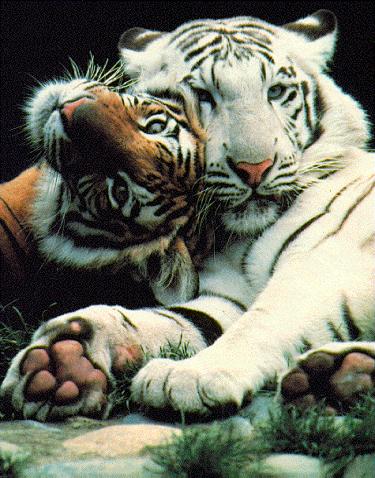
Bengal tigers (
panthera tigris tigris) are one of the six non-extinct subspecies of tiger. It is the least endangered subspecies, though it is still critically endangered. The Bengal tiger is most commonly found in southern India, and lives in tropical dry forest (where Asiatic Lions can be found) or tropical rain forests. They are the second largest of the tigers, seconding only to the Amur tiger.
Bengal tigers have two main genetic mutations. One is the wide-band gene, which causes the "Golden Tabby" or "Strawberry" color variat

ion. The other is a gene which causes a white tiger. This can also occur with the Amur tiger, though it is considerably more rare. Despite common misconception, white tiger is a tiger that is white with black stripes, not an all white tiger.

Bengal tigers have 2-4 cubs in a litter, and stay with them for two years. The mother raises the cubs. They get taught how to hunt, how to fight, and how to survive. After those two years, the cubs leave the den, and rarely, if ever see each other again.
Despite their mostly solitary lifestyle, tigers sometimes form large groups known as
streaks. The tigers help raise each other's cubs, care for each other when hurt, and though they hunt alone or in pairs, they hunt for the group.
So take a look at the local cat, then look at their majestic big cat cousin, the tiger. What do you see?
FUN FACTS:
- Did you know that the scientific name of the Bengal tiger was once Panthera Tigris Bengalensis?I didn't even know that, and I'm a Bengal Tiger! I found this fact when I was searching the web for more infromation, and I found this on wikipedia.org
- Bengal tigers are sometimes called Indian Tigers

 ion. The other is a gene which causes a white tiger. This can also occur with the Amur tiger, though it is considerably more rare. Despite common misconception, white tiger is a tiger that is white with black stripes, not an all white tiger.
ion. The other is a gene which causes a white tiger. This can also occur with the Amur tiger, though it is considerably more rare. Despite common misconception, white tiger is a tiger that is white with black stripes, not an all white tiger.
